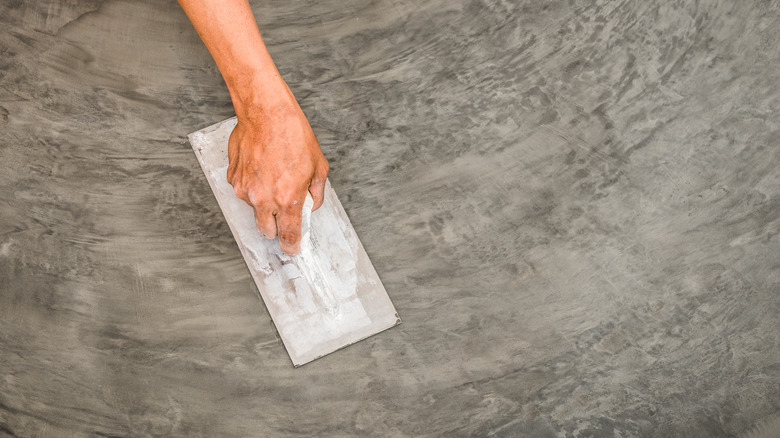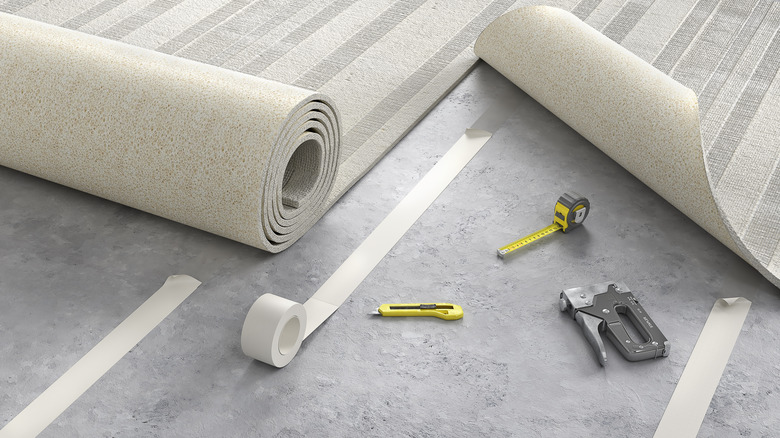Things To Keep In Mind When Installing Carpet Over Concrete
Concrete is a solid flooring choice. It is incredibly durable, doesn't require much maintenance, is scratch-resistant, and can withstand fire and water. Moreover, cleaning concrete floors is economical and simple. However, the cold, plain gray flooring isn't pleasing to the eye or comfortable to walk on. This is where carpets come in. They're soft underfoot, add warmth and color to a space, and readily absorb noise. But you should keep certain things in mind when installing carpet over concrete.
For starters, selecting the right carpet type is necessary since carpet over cold concrete will generate heat. The resultant moisture can lead to carpet rotting, especially if the weather outside is warm and humid. So, pick a synthetic area rug, like an olefin carpet, as it won't readily absorb moisture and get damaged. You'll also need to remember that the onus of measuring the room's width and length to determine the carpet's square footage falls on you. Additionally, you'll have to determine if you're comfortable undertaking extensive DIY projects since carpeting your floors will require considerable prep. The installation process is time- and labor-intensive, too.
Prepping the surface
To install an area rug over concrete, you need to prep the surface first. Begin by clearing out the room— remove all furniture, lamps, and other decor items that rest on the floor. Baseboards and doors that might impede the installation process need to be removed as well. After you're done, use a dehumidifier to remove excess moisture from the space. Now, run a critical eye over the surface and take note of any divots, holes, or cracks, as you'll need to smooth them out with a waterproof and cement-friendly filler. Moreover, ensure you pull out stray nails and screws from the flooring.
In case the flooring is uneven, level it out with a dedicated compound. Once the floor is as smooth as possible, vacuum it to remove lingering dust and debris. Follow it up with a bleach and water bath (in a 1:15 ratio) to eliminate hidden bacteria or mold from the surface. Rinse the floor with clean water and let it dry. Finally, ensure the temperature in the room is between 65 and 95 degrees Fahrenheit and that the humidity level is in the 10 to 65% range. Open the windows, too, to promote ventilation, and unwind the carpet for at least 24 hours before installation to let the chemical fumes air out.
Installing the carpet
Lay down concrete tack strips along the length of the wall, with the nails (or tacks) facing the wall. Leave a 1/2-inch space between the strips and the wall. You'll want to use an epoxy adhesive or galvanized nails to keep them in the desired spot as well as ensure the strips are firmly secured, or the carpeting will get bunched up, leading to slipping accidents. Next, install a vapor barrier, like a polyethylene pad, to keep moisture from seeping into the carpet. You can even spring for an underlayment, like a synthetic carpet pad, to add cushioning and extend the lifespan of your area rug.
Now, unroll the carpet rolls, keeping 3 to 4 inches of extra material along the walls. Put some heat-activated seam tape underneath, and make relief cuts around the corners with a sharp utility knife. Press down the edges and run a carpet or hot iron over the surface to secure the area rug. It's important to gently pull the carpet with your hands to stretch it and anchor it to the tack strips. Use a knee kicker to get the edges, cut off excess material, put back the baseboards, and vacuum the rug to remove leftover debris.
If the entire process seems too complicated and harrowing, and you end up not feeling up to the task, there's nothing wrong with calling in the pros. While the labor cost might stretch your budget a little, the carpet installation will be seamless and without mistakes.


